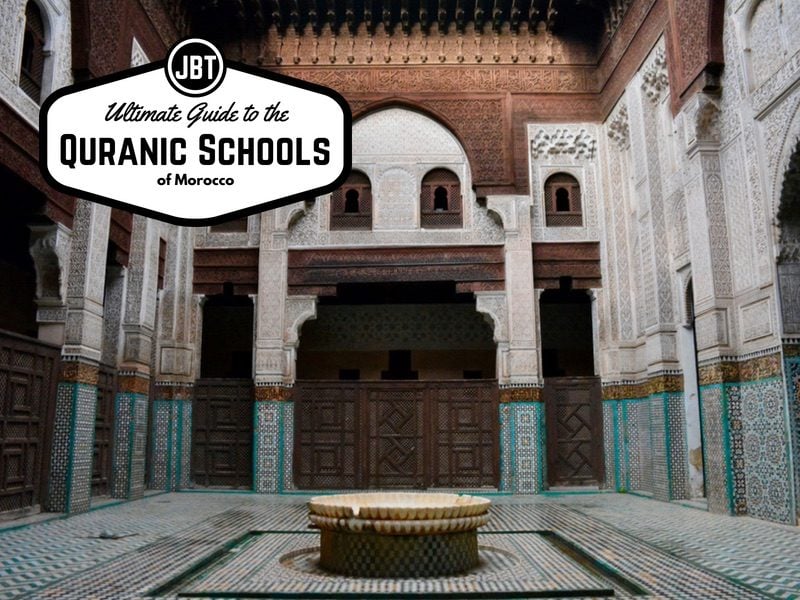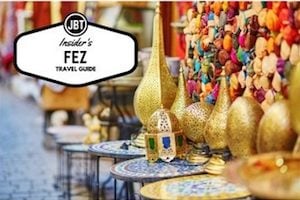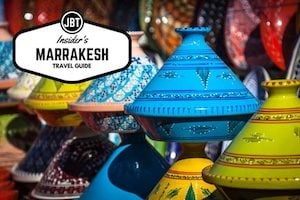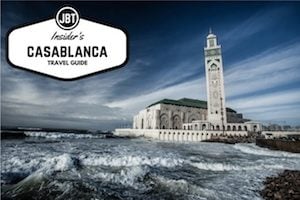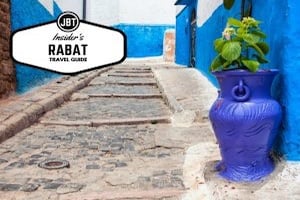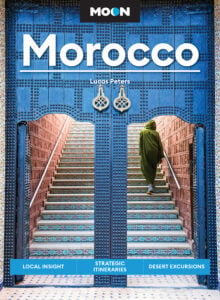The long, storied history of learning and scholarship in Morocco is often surprising to first time visitors, and even to some longtime inhabitants. In fact, Morocco boasts the world’s oldest university – the University of al-Qarawiyyin (also written as: Al Quaraouiyine or Al-Karaouine). Recognized by UNESCO and the Guinness Book of World Records as the world’s oldest university, al-Qarawiyyin was founded in 859 AD by Fatima al-Fihri, the daughter of a wealthy merchant family who immigrated to Morocco from modern-day Tunisia. The university is home to one of five magnificent Quranic schools of Morocco open to visitors. But before you step foot into these oases of education, take a few moments to learn a bit more about their incredible history and glimpse behind the curtain and into the daily lives of Moroccan students and teachers who spent their days and hours stressing about midterms and finals in these architectural wonders.
Quranic Schools of Morocco – A Brief History
Before there were public and private schools in Morocco, there were religious schools called madrasas (often also: medersas). These schools were based on the study of the Qu’ran, much like Sunday schools study the Bible or in synagogues one might have attended Cheder. However, unlike these schools largely dedicated to studying a particular theology, Quranic schools typically went well beyond the bounds of theology. Of course, the Qu’ran was studied, often with other holy texts, but students also studied other topics – such as geometry, algebra, history, languages, law, astronomy and other sciences and fields.
As the importance of these madrasas grew, so did their perceived value with the sultans and kings of Morocco. During the 13th and 14th centuries, enormous amounts of money and time went into creating ornate, highly decorative schools that incorporated some of the most wonderful elements of Moroccan architecture. Today, five of these historic schools remain in Morocco, each a testament to its age, the importance of education and a pinnacle of Moroccan art and architecture.
Quranic Schools of Morocco – How Did They Work?
As part of the function of a madrasa, students were housed within the school and looked after so that they could fully concentrate on their studies. Nearly all of the larger madrasas in Morocco had attached dormitories for the students. These dormitories would look over a central courtyard with another large room generally set aside for studies. Studies took place in the traditional manner with the teacher lecturing from a tall stool or chair and the students all sitting on the floor, listening intently to memorize the lecture.
The relationship between student and teacher, as it existed in the classroom, might best be seen in the Arabic word kursi. This is the Arabic word for “stool” or “chair” and it was from “the chair” that a teacher would profess to his students, all of them sitting in a half-circle on the floor. This is a basic concept for a university structure and is continued today where professors hold “chairs,” as in the “Chair of the English Department.”
Outside of the classroom, students and teachers were often very close, with a teacher expected not only to educate their pupils in terms of acquiring skills, but also intellectual, spiritual, physical, moral and materialistic growth. In fact, many students would even be sponsored financially by the teachers so that they might continue their studies, a precursor perhaps to our modern scholarship system.
The madrasas became central places in the political and cultural life of the city. They were places dedicated to learning and the advancement of all knowledge. Sadly, over the years, some of these schools have been left to wither and eventually completely crumbled or were otherwise destroyed. However, a few were updated, maintained, and even recently been renovated. The preservation of their ornate decor and the ability to experience an ancient space dedicated to learning are both reasons for which these madrasas are now visited.
Today, the cities of Fez, Marrakesh, Meknes and Salé (across the river from Rabat) offer opportunities to visit exquisite examples of these ancient schools and see firsthand their ornate, almost impossible beauty.
On your next trip to Morocco, make sure you visit at least one of these extraordinary architectural feats.
JBT’s Ultimate Guide to the Quranic Schools of Morocco – Fez
Fez, smack in the heart of Morocco, is home to an impossibly rich cultural heritage. Founded in 789 AD by the son of Moulay Idriss, the founder of modern-day Morocco, for over a thousand years, Fez has been a cultural and economic center, not only to its country, but all of Africa, the Middle East and, in some centuries, the world.
Visitors to Fez will be delighted to discover that Fez is not home to one, but two beautiful Quranic schools – the Bou Inania and Al-Attarine madrasas.
The Madrasa Bou Inania
The Madrasa Bou Inania was founded in AD 1351–56 by Abu Inan Faris. The name, Bou Inania, comes from the first part of the sultan’s name, Abu Inan. The madrasa is widely acknowledged as an excellent example of Marinid architecture. It’s function was a bit different than other madrasas as it functioned not only as an educational institute, but also as a congregational mosque. In fact, the mosque portion of the school is still functional today with tourists mingling with Muslims performing their ablutions in the courtyard fountain on their way to do prayer. Because of its religious function, this is also the only madrasa in Fez with an attached minaret.

According to history, Abu Inan Faris listened to the religious leaders of the al-Qarawiyyin Mosque who instructed him to build the madrasa. It soon became one of the most important schools in all of Morocco and even attained the status of “Grand Mosque,” meaning a central place of learning.
The madrasa was renovated in the 18th century. During the reign of Sultan Moulay Sliman, entire sections were reconstructed while in the 20th century, major restoration work was performed on the load-bearing structure, the plaster, wood and tiled decorations with traditional geometric patterns.
The madrasa is one of the few religious places in Morocco that is accessible for non-Islamic visitors. Interestingly, the Arabic script lining the walls isn’t script from the Qu’ran, but a list of names, likely donors or large families in Fez at the time of construction.
The Bou Inania Madrasa is located near Bab Boujaloud – the famous blue gate that is one of the primary entrances to the old Fez medina – at the top of Taala Kbira. Across from the madrasa is the Dar al-Magana, a wall with a hydraulic clock that was built in at the same time as the school and currently under renovation.
Al-Attarine Madrasa
The Al-Attarine Madrasa is near the al-Qarawiyyin Mosque and University. It was built by the Marinid sultan Uthman II Abu Said in 1323-25, in the heart of the perfume and spice market – in Arabic this is known as the attarine district, from which is takes its name. It is modest in size, smaller than many of the other great Quranic schools of the time, and could accommodate only 60 students.
What it lacks in size, the al-Attarine madrasa makes up in decoration. The contrast between this sheer amount of artistry, the detailed tile, plaster and wood work, all packed into these limited dimensions gives the impression of a real gem, carved to perfection. The ornamentation is finely worked throughout and alternates various techniques with tile, plaster and carved wood covering the entire upper surfaces of the walls, lightening the the space. The ceiling of the prayer hall, in particular, is considered a masterpiece of intricately carved cedar wood and has survived the centuries.
The design of the madrasa mixes artistic and practical considerations. Cedar wood is used because of its resistance to weather while the the mosaic helps to keep the rooms cool during the hot summer days. Meanwhile, the richness of the decoration itself emphasizes the importance of the place. It is sacred, but was also constructed to make students forget the remoteness of their family and to give their eyes pleasing geometrical figures to allow their eyes to have something to follow. In this way, they were made to feel less alone, less isolated and even happy.

The whole of the al-Attarine creates an impressive structure that teems with details and colors in such a way to make it easier to imagine what life must have been like, dedicated in studies in this incredible space. In comparison to some other madrasas, because of its smaller size, the general vibe of the madrasa can be more intimate of an experience.
JBT’s Ultimate Guide to the Quranic Schools of Morocco – Marrakesh
Ben Youssef Madrasa
The Ben Youssef Madrasa of Marrakesh takes its name from the Almoravid sultan, Ali ibn Yusuf (1106–1142). Yusuf was responsible for expanding Marrakesh and the city’s influence considerably. The madrasa, founded about 200 years after Yusuf’s death in the 14th century, is the largest in all of Morocco. In the 16th century, the madrasa underwent reconstruction under Saaidan rule, the same dynasty known for their love of elaborate decoration and responsible for the Saaidian Tombs.
The madrasa features a 130-room dormitory that clusters around a courtyard decorated in marble, stucco, zellij and carved cedar. At one point in its history, the Ben Youssef madrasa may have housed as many as 900 students. In 1960, the madrasa was closed before becoming a historical site. After restoration work, it was reopened to the public in 1982.

This is considered a “must stop” location on your voyage through Marrakesh to glimpse, not only at the supremely well preserved architecture, but to also experience what life was like through the eyes of students at the time. For those who were lucky enough to have the intelligence, the wealth, the social connections (or perhaps all three) to make higher education a possibility, this was where they called home.
JBT’s Ultimate Guide to the Quranic Schools of Morocco – Meknes
The Bou Inania Madrasa
Though it carries the same name as the Bou Inania madrasa in nearby Fez, the Bou Inania madrasa in Meknes actually predates the Fez one by about a decade. It wasn’t built under the direction of Abu Inan Faris, from whom it derives its name, just like the Bou Inania in Fez. Instead, this school was was built by Abu Inan’s father, Abu al-Hassan Ali ibn Othman in 1341. It’s not clear whether or not Abu al-Hassan named it for his son. It quite possible that the son renamed the madrasa for himself after his father’s death.

Elaborate tilework intertwines with carved zellij in the interior courtyard before giving way to a geometrically carved cedar wood roof – an exquisite example of classic Moroccan craftmanship and design. Surrounding the courtyard are the dormitories for students, who often slept two to a room. Upstaires there are can’t-miss views over the adjescent mosque and greentiled rooftops of Meknes.
Of the few remaining Marinid-era monuments left in Morocco, this is considered the best preserved and is a true wonder of Islamic architecture. From the engraved columns to the ornaments inside – including a hidden tribute to a local industry – the Bou Inanaia madrasa is perhaps the most memorable piece of architecture in all of Meknes.
JBT’s Ultimate Guide to the Quranic Schools of Morocco – Salé (Rabat)
Abu al-Hassan Madrasa
In the overlooked city of Salé, just short trip across the river from Rabat, lies the Abu al-Hassan madrasa. Unlike it’s more known counterparts in Fez, Marrakesh and Meknes, this madrasa has the distinction of being perhaps the least-visited of the five historic madrasas in Morocco.
Tucked away at the end of a narrow alley, behind a modern-day school and a local mosque, Abu al-Hassan is considerably smaller than Ben Youssef in Marrakesh, though every bit worth the short trip into Salé to discover. Whereas the other madrasas are located in landlocked cities, the majestic light of the Atlantic pours through this ancient school, reflecting off the glazed zellij work and casting the intricately carved cedar work into seemingly magic relief.
Ibn al-Khatib, a famous Andalusian-Arab writer, poet and historian, is known to have visited the madrasa saying that when he visited, found over a hundred poets in residence. 
The madrasa was restored at the end of the 18th century and then received a major restoration from 2001-2005. Today it hosts the biennial Karacena Festival celebrating circus arts and world travel. Though it might seem somehow strange for a madrasa to host such an avant-garde festival, it is somehow fitting as at one time, these madrasas of Morocco were at the very forefront of learning, exploring questions of science, history and philosophy, encouraging poetry and debating the rule of law, all of which are values of what we might think of as a precursor to the concept of our liberal arts education.
For more about the Quranic Schools of Morocco: https://www.journeybeyondtravel.com/blog/moroccan-koranic-schools.html
About the Author
 Text and photos by award-winning writer, photographer, and Morocco expert, Lucas Peters. After spending years traveling to the distant corners of Morocco and writing about his adventures, Lucas penned the 1st and 2nd editions of the best-selling guidebook Moon Guidebooks: Morocco as well as Marrakesh and Beyond published by Hachette. He also edited and contributed to the Our Morocco anthology. As the Director of JBT, he helps our travelers experience the journey of a lifetime. He lives in Tangier with his family.
Text and photos by award-winning writer, photographer, and Morocco expert, Lucas Peters. After spending years traveling to the distant corners of Morocco and writing about his adventures, Lucas penned the 1st and 2nd editions of the best-selling guidebook Moon Guidebooks: Morocco as well as Marrakesh and Beyond published by Hachette. He also edited and contributed to the Our Morocco anthology. As the Director of JBT, he helps our travelers experience the journey of a lifetime. He lives in Tangier with his family.

